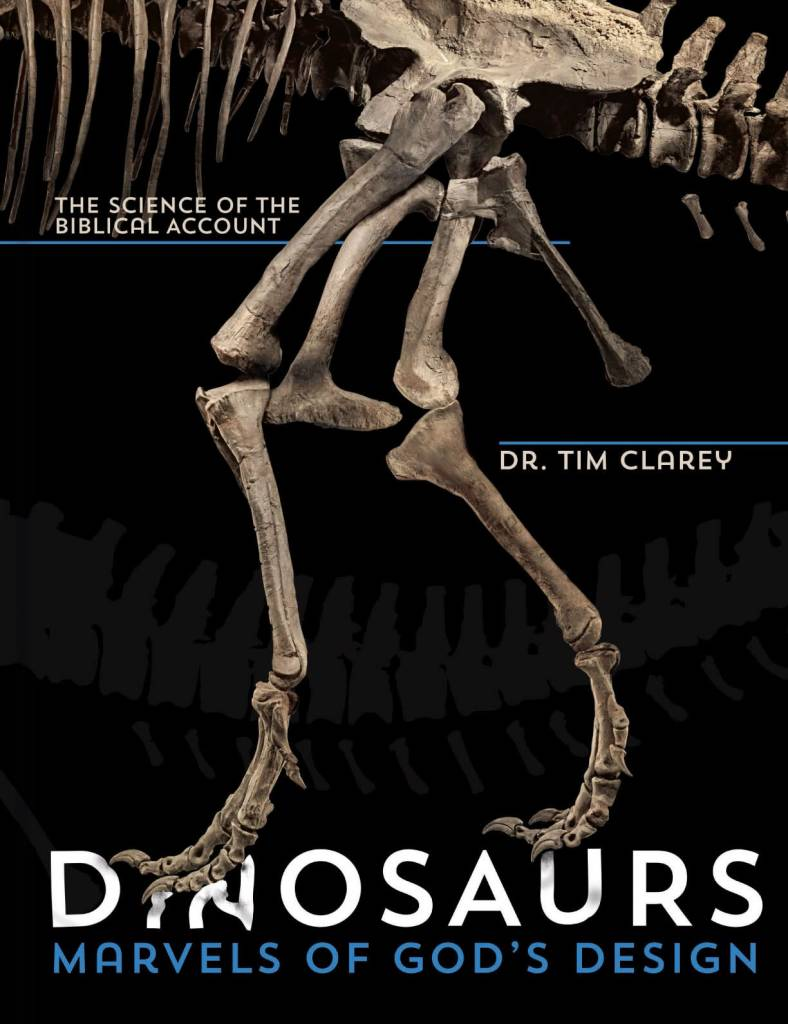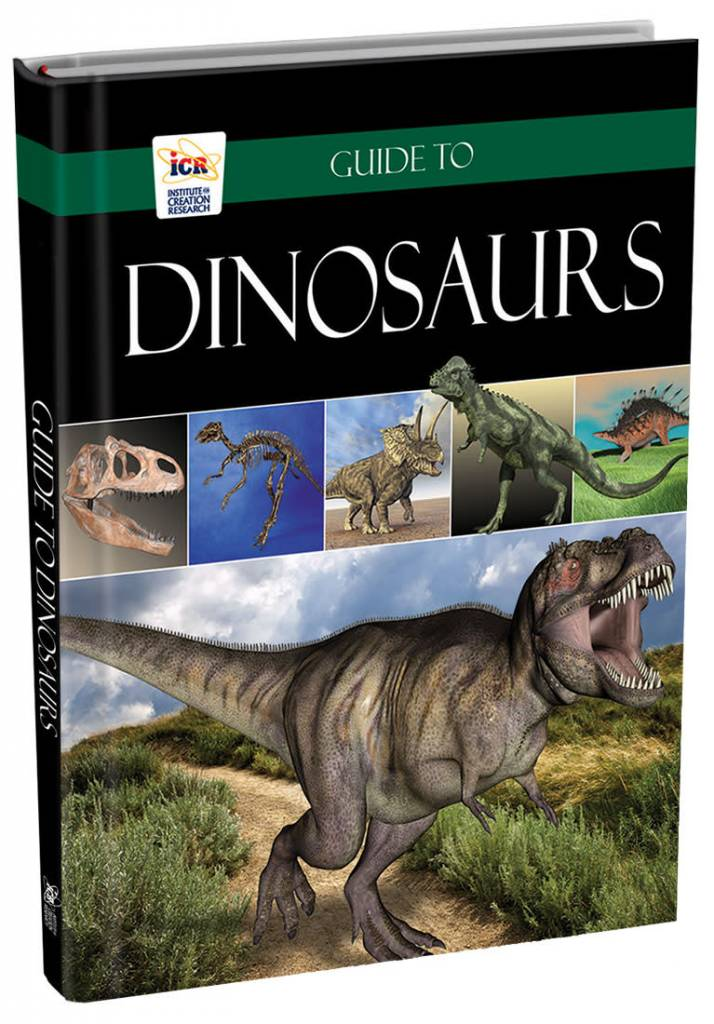Previously in “Believing in Feather Tales”, we examined the history of evolutionists attempting to persuade the public that certain dinosaurs evolved into modern-day birds. What is most revealing is their inability to convince some of their fellow evolutionists. It seems that even though media, museums, and movies are increasing their promotion of feathered dinosaurs, there are more and more evolutionary scientists who are rejecting it. For further information on this matter, consult Romancing the Birds and Dinosaurs
by evolutionary scientist Dr. Alan Feduccia.¹
From the scientific realm, several problems arise. For one, dinosaurs are considered to be reptiles (cold-blooded, scaly animals), vastly different from birds (warm-blooded, feathery animals). To combat this glaring problem, evolutionists redefine reptiles. Reflecting the popular notions of the day, Wikipedia
states under the article “Reptile”: “…crocodilians are more closely related to birds than they are to other living reptiles… modern cladistic classification systems include birds within Reptilia”.² Apparently when one sees a crocodile, one is not to think “lizard” but rather “penguin” because it’s more like a feathered-bird in water than a scaly-reptile on land (a facepalm would be appropriate here). Reciprocally, the Wikipedia
article “Bird” states: “Birds are a group of warm-blooded vertebrates constituting the class Aves… Birds are feathered theropod dinosaurs and constitute the only known living dinosaurs… birds are considered reptiles in the modern cladistic sense”.³
O, what a tangled web we weave, when first we practice to deceive!⁴
Marmion, XVII: 533-4
Look at the mess in which evolutionists have entangled themselves in desperate hopes of legitimizing their beliefs. In order to say birds are living dinosaurs, they classify living birds as “avian dinosaurs” and classify extinct dinosaurs as “non-avian dinosaurs.” Have you ever read anywhere else in biology or zoology an animal classified by what it is not? Saying “non-avian dinosaurs” is like saying “non-mammalian salamanders” or “non-reptilian cows.” This is just sad.
Additionally, because birds are warm-blooded, in their minds dinosaurs must also have been warm-blooded. If true, they would be the only reptiles to be so, which would cause a host of problems. For one, because of increased metabolism caused by warm-bloodedness, the bigger a dinosaur got, the more food it would require. African elephants weigh 8,000 to 16,000 pounds, eating 300 to 600 pounds of food per day.⁵ If the sauropod Dreadnoughtus
was warm-blooded and required the same portions as an elephant, then the 108,000-pound dinosaur would need over 4,000 pounds of food per day. To solve this problem, evolutionists say some dinosaurs were cold-blooded (the ones needing too much food) while others were warm-blooded (the ones they need to turn into birds).
Secondly, their anatomy does not support warm-bloodedness. 99% of warm-blooded creatures (mammals, birds, and even humans) have respiratory turbinates in their noses. They serve to warm, humidify, and filter air; they also prevent dehydration due to internal temperatures heating up the air within the lungs. Reptiles do not have respiratory turbinates because they are cold-blooded. Guess what has never been found in any dinosaurs – respiratory turbinates! They had olfactory turbinates that greatly increased their sense of smell, but no respiratory turbinates as required for warm-bloodedness.⁶ Rather, soft-tissue discoveries in dinosaurs (which should not be there if they are millions of years old) have revealed anatomy the exact opposite of birds with a diaphragm-assisted, lung ventilation system similar to modern crocodiles, meaning “the crocodilian-style lung system and the lack of respiratory turbinates indicate that these dinosaurs routinely maintained ectotherm-like [cold-blooded] resting metabolic rates.”⁷
It may be true that dinosaurs were more active than reptiles today, but this may have been the case for all reptiles before the Flood. Research suggests that the pre-Flood world would have been warm and tropical with greater oxygen and CO2 levels, ideal for reptiles to thrive with much greater activity.⁸ Feathers would have greatly hindered dinosaurs, over-heating them in such environments. So, were there ever any dinosaurs with feathers? Have dinosaur fossils been found with feathers as we so often hear?
To be continued…
1. Feduccia, Alan. Romancing the Birds and Dinosaurs: Forays in Postmodern Paleontology. Brown Walker Press, 2020.
2. “Reptile”, Wikipedia the Free Encyclopedia, ed. 5 July 2022, Wikimedia Foundation, Inc., accessed 8 July 2022, <https://en.wikipedia.org/wiki/Reptile>.
3. “Bird”, Wikipedia the Free Encyclopedia, ed. 8 July 2022, Wikimedia Foundation, Inc., accessed 8 July 2022, <https://en.wikipedia.org/wiki/Bird>.
4. Scott, Sir Walter. Marmion: A Tale of Flodden Field. Archibald Constable, Edinburgh, 1808.
5. “Facts about Elephants”, 14 September 2019, Elephant-World, accessed 8 July 2022, <https://www.elephant-world.com/facts-about-elephants/>.
6. Hillenius, Willem J. “Dinosaur Physiology: Were Dinosaurs Warm-blooded?”, College of Charleston, SC, January 2006, doi: 10.1038/npg.els.0003323.
Ruben, J.A., T.D. Jones, N.R. Geist, et al. (1996) Bioessays
20:852-9.
7. Clarey, Dr. Tim. Dinosaurs: Marvels of God’s Design. Master Books. Green Forest, AR. 2018, p. 123.
8. Brussel, Vrije U. “Dinosaurs lived in greenhouse climate with hot summers”, 10 June 2021, Phys.org, accessed 8 July 2022, <https://phys.org/news/2021-06-dinosaurs-greenhouse-climate-hot-summers.html>.
Clarey, Tim, Brian Thomas. Guide to Dinosaurs. Institute for Creation Research, Dallas, 2019, pp. 16-7.





